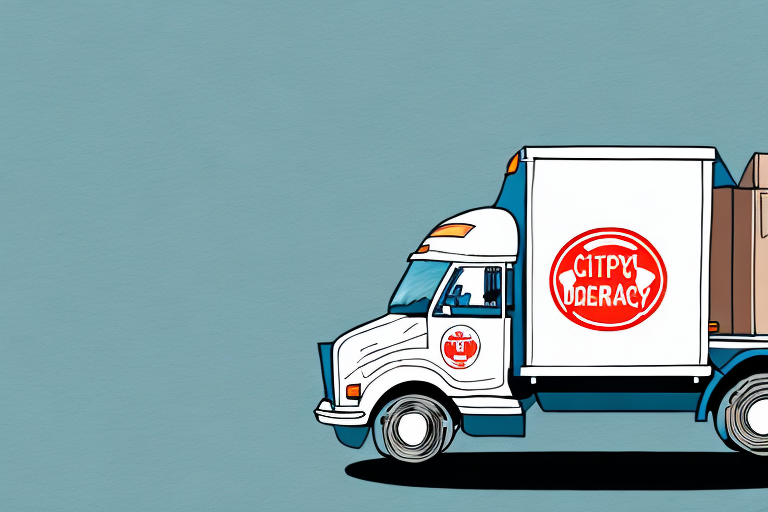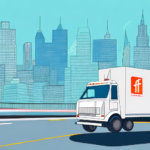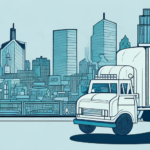Understanding the Cost of Last Mile Delivery
Last mile delivery is a critical component of logistics that e-commerce businesses must prioritize. It represents the final stage of the delivery process, transporting products from a distribution center directly to the customer's doorstep. This phase presents numerous challenges due to factors that significantly influence the cost of last mile delivery.
What is Last Mile Delivery and Why is it Important?
Last mile delivery is pivotal to the success of an e-commerce business. When customers place an order, they expect prompt and efficient delivery of their products. Last mile delivery serves as the crucial link between the customer and the product, making its reliability and speed essential. A failed or delayed delivery can lead to dissatisfied customers, negative reviews, and potential loss of business.
One of the primary challenges in last mile delivery is urban traffic congestion. With the surge in online shopping, delivery vehicles contribute to crowded roads, hindering timely deliveries. To mitigate this issue, some companies are adopting alternative delivery methods such as drones and electric bikes. These solutions not only alleviate traffic congestion but also offer a lower carbon footprint, promoting sustainability.
The Challenges of Last Mile Delivery
Urban Logistics Complexity
Navigating through traffic congestion, roadblocks, and narrow streets complicates urban logistics. These obstacles can delay delivery times and increase operational costs.
Geographical Factors
The distance and location significantly impact last mile delivery costs. Delivering to remote or rural areas is often more time-consuming and expensive due to limited infrastructure and connectivity.
Real-Time Tracking and Communication
Customers expect real-time tracking and timely updates on their deliveries. This necessitates investment in advanced technology and software to provide accurate information. Efficient communication between drivers, dispatchers, and customers is also crucial to prevent delays and ensure satisfaction.
Factors Affecting the Cost of Last Mile Delivery
Operational Costs
The cost per mile is influenced by vehicle operating expenses, fuel prices, and labor costs. Additionally, the size and weight of shipments, delivery times, and locations play a significant role in determining overall costs.
Type of Goods
Delivering fragile or hazardous items requires specialized handling and transportation, increasing delivery costs. The proximity of the delivery location to the nearest distribution center also affects costs, as longer distances may demand more resources and time.
Transportation Mode
The choice of transportation—whether bicycles, electric vehicles, or traditional delivery trucks—impacts both cost and environmental sustainability. The suitability of the transportation method depends on the shipment's size, weight, and delivery location accessibility.
How to Optimize Last Mile Delivery to Reduce Costs
Routing Optimization and Scheduling
Employing routing optimization and scheduling software helps businesses identify the most efficient delivery routes, reducing fuel consumption and travel time.
Outsourcing to 3PL Providers
Partnering with third-party logistics (3PL) providers can streamline delivery processes, cut costs, and enhance delivery speed.
Crowdsourcing Delivery Networks
Collaborating with last-mile delivery startups that utilize independent contractors can lower delivery costs and increase flexibility.
Customer-Centric Delivery Options
Implementing delivery management systems that offer customers flexible delivery times and locations can reduce failed delivery attempts and boost satisfaction.
- Locker and Pickup Point Deliveries
- Eco-Friendly Delivery Methods
The Role of Technology in Last Mile Delivery Cost Reduction
Advanced Tracking and Communication Tools
Utilizing GPS tracking, customized delivery apps, and electronic signature capture streamlines the delivery process and enhances the customer experience.
Autonomous Delivery Solutions
Drones and autonomous vehicles are revolutionizing last mile delivery by reducing costs and increasing efficiency.
Route Optimization Software
Route optimization tools analyze delivery data to create the most efficient routes, minimizing fuel costs and travel time while improving delivery reliability.
Case Studies: Companies That Have Successfully Reduced Last Mile Delivery Costs
Amazon
Amazon's package pickup service in select cities has significantly reduced last mile delivery costs by minimizing delivery times and optimizing logistics operations.
Postmates
Postmates collaborates with local retailers for on-demand deliveries, effectively cutting down fulfillment costs and enhancing delivery efficiency.
UPS
UPS's implementation of route optimization software has led to reduced fuel consumption and decreased delivery times, showcasing substantial cost savings.
Walmart
Walmart leverages its employees for package deliveries during their commute, reducing delivery costs and providing employees with additional income opportunities.
Future Trends in Last Mile Delivery Cost Reduction
Emerging Technologies
Innovations like delivery robots, sidewalk drones, and autonomous vehicles are set to significantly lower delivery times and costs.
Blockchain Integration
Blockchain technology offers a secure and transparent method for tracking packages, reducing the need for intermediaries and associated costs.
Crowdsourced Delivery Models
With the rise of e-commerce, crowdsourced delivery models allow individuals to deliver packages in their spare time, providing a cost-effective alternative to maintaining a dedicated delivery fleet.
Tips for Managing Last Mile Delivery Costs in an E-commerce Business
Data-Driven Efficiency
Utilizing data analytics helps identify inefficiencies and optimize delivery operations to reduce costs.
Leveraging 3PL Providers
Outsourcing to 3PL providers can enhance route optimization and scheduling, leading to cost savings.
Incentivizing Delivery Personnel
Offering incentives to drivers for timely and efficient deliveries can improve performance and reduce operational costs.
Sustainable Practices
Adopting eco-friendly delivery methods, such as using electric or hybrid vehicles and eco-friendly packaging materials, can lower costs and appeal to environmentally conscious consumers.
The Impact of COVID-19 on Last Mile Delivery Costs and Strategies for Survival
The COVID-19 pandemic has reshaped last mile delivery strategies, emphasizing the need for contactless deliveries and increased e-commerce capacity. Companies have implemented safety protocols while striving to maintain delivery efficiency through methods like curbside pickup and delivery appointments.
The pandemic also highlighted the importance of a robust delivery workforce. With many employees unable to work due to illness or quarantine, businesses turned to gig workers and independent contractors, though this approach presents challenges such as regulatory compliance and increased costs.
Investing in automation and robotics emerged as another strategy to streamline delivery processes, though these solutions require substantial initial investment and ongoing maintenance.
In conclusion, understanding and optimizing the cost of last mile delivery is essential for e-commerce success. By leveraging technology, innovative delivery methods, and sustainable practices, businesses can reduce costs and enhance customer satisfaction, positioning themselves for long-term growth in the competitive e-commerce landscape.




















